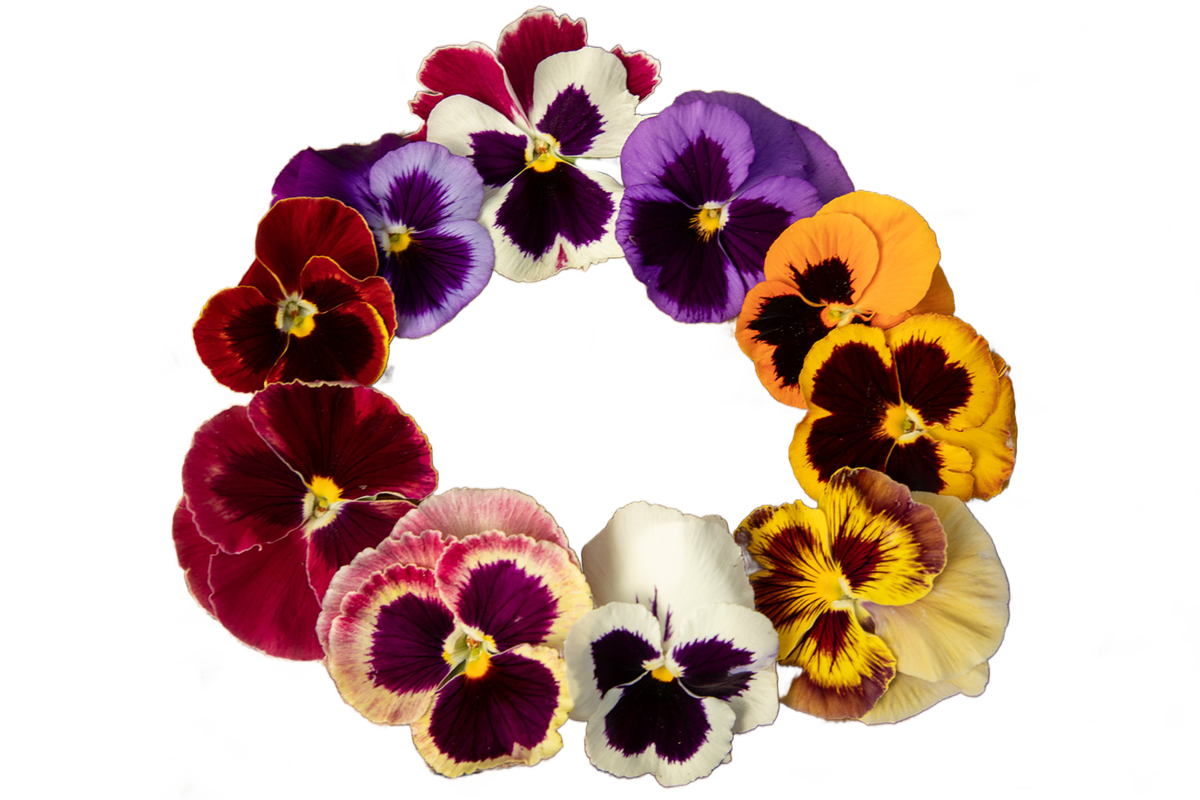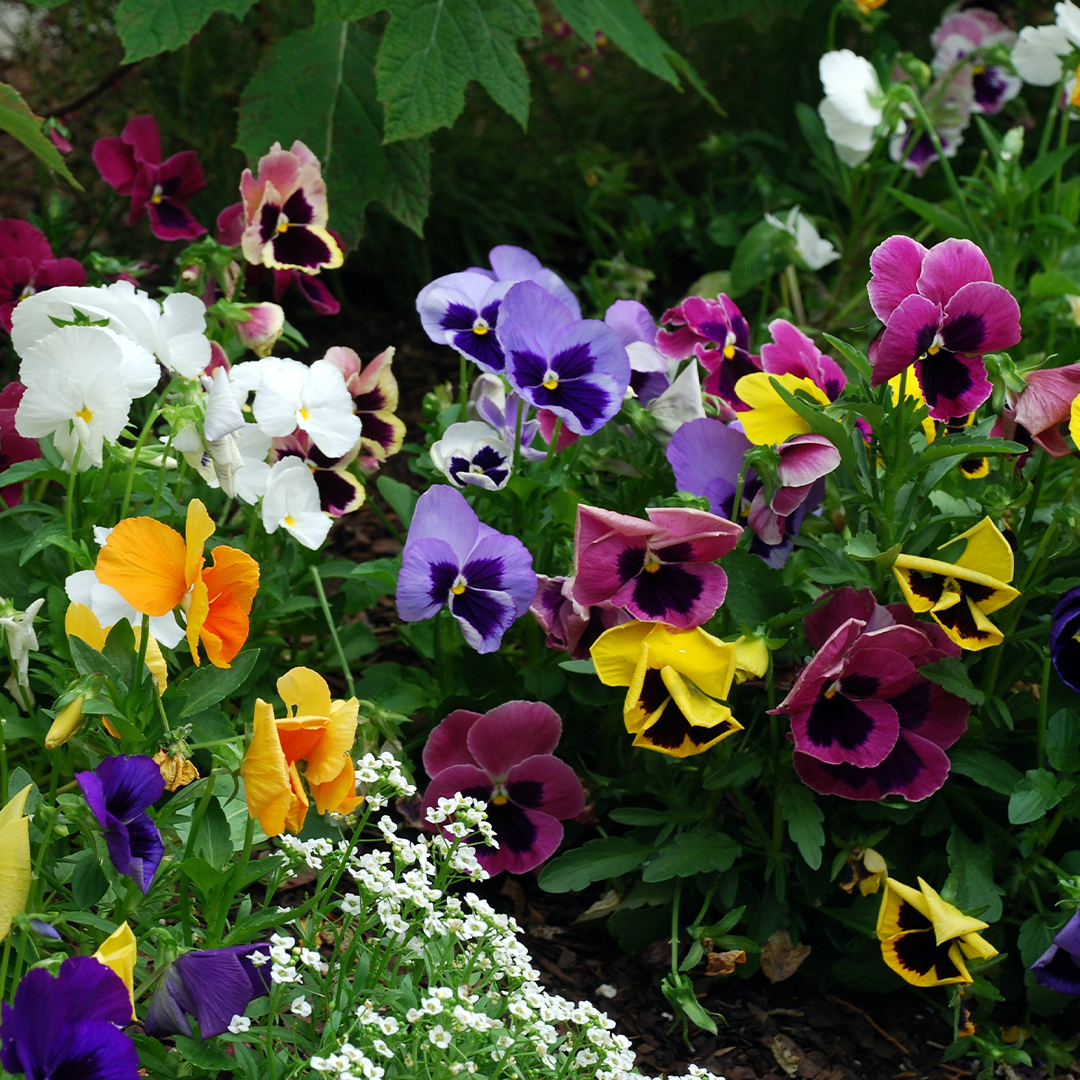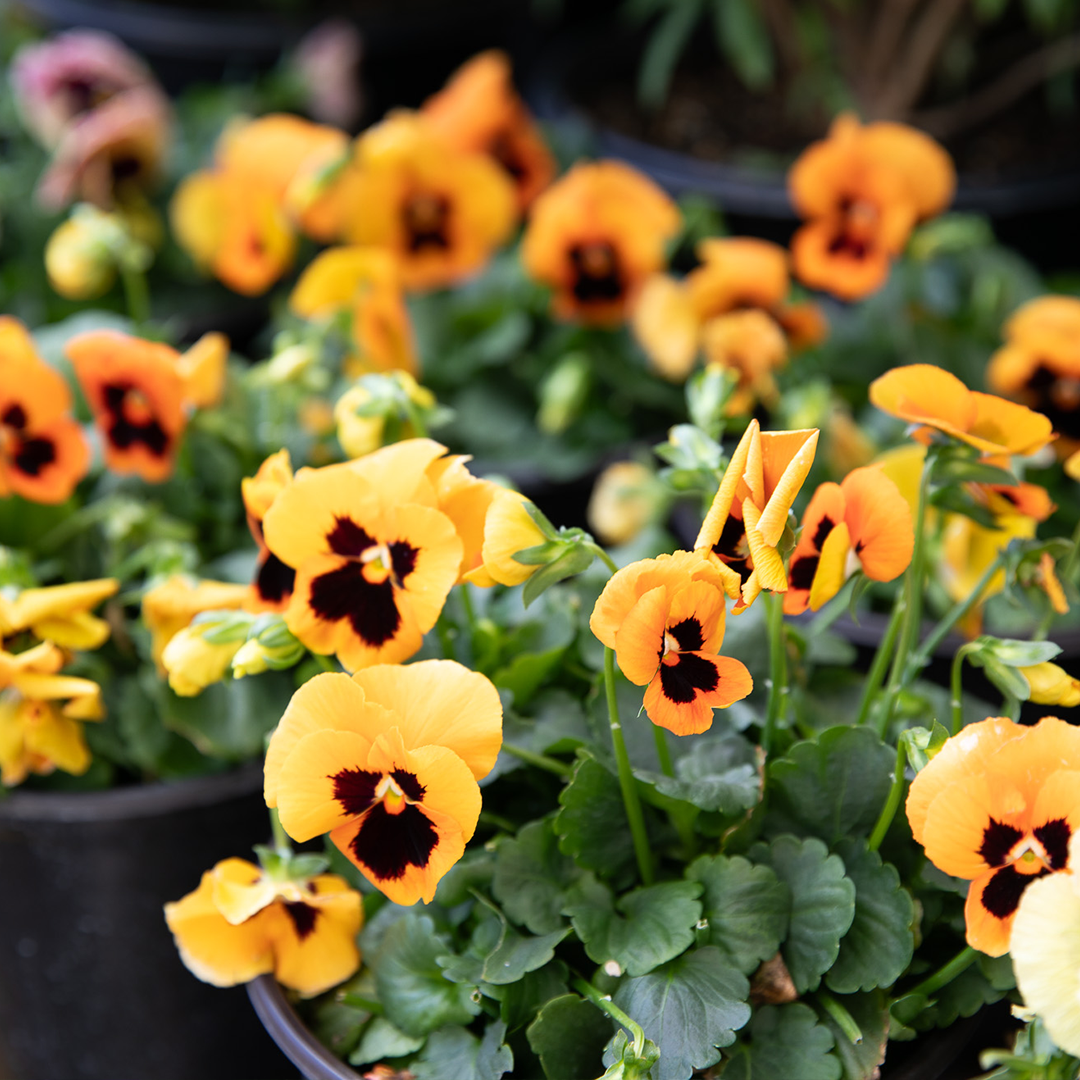
Perfect Pansies

Pansies: Bright and Hardy Blooms for Your Garden
Pansies are a garden favorite, known for their vibrant, face-like blooms that add color to any landscape. Hardy and easy to grow, they’re perfect for both beginners and experienced gardeners in beds, containers, or window boxes. Here's a quick guide on pansy history, care, and the best time to plant for vibrant blooms.

The Origin of a Pansy
Pansies have a rich history rooted in European horticulture, originating from the wildflower "Johnny Jump Up". In the 19th century, English breeders developed the modern pansy (Viola x wittrockiana), and Victorian gardeners embraced them for their beauty and symbolism. The name "pansy" comes from the French word pensée (thought), as the flower’s face-like appearance evoked deep contemplation, often symbolizing love and remembrance.

Perfect Cool-Season Blooms
Pansies thrive in cooler temperatures, making them great choices for fall and early spring planting. In most regions, the best time to plant pansies is in the fall. This allows them to establish roots and take advantage of the cooler autumn months before winter arrives.

How to Care for Pansies
Pansies are relatively low-maintenance, but a few simple care tips will keep them thriving throughout their season:
- Sunlight: Pansies prefer full sun to partial shade. In warmer climates, afternoon shade can help them avoid wilting during hotter days.
- Soil: Well-draining soil is essential for pansies. They don’t like soggy roots, so ensure your garden bed or containers have good drainage. Adding organic matter, like compost, will also boost their growth.
- Watering: Pansies need consistent moisture, especially during dry spells, but avoid overwatering. Keep the soil evenly moist but not waterlogged, allowing the top inch to dry slightly between waterings.
- Feeding: Fertilize pansies with a balanced, slow-release fertilizer when planting. This will provide them with the nutrients they need to bloom abundantly. You can also feed them every 4-6 weeks during their growing season to keep them producing.
- Deadheading: To encourage more blooms, regularly deadhead spent flowers. Removing faded blooms will prevent pansies from going to seed, allowing them to direct their energy into producing more flowers.

Edible Delights
Beyond their beauty, pansies are also edible, making them a fun addition to your garden. Their delicate blooms can be used to garnish salads, desserts, and drinks, adding a pop of color and a mild, slightly sweet flavor. You can also candy the flowers for a decorative touch on cakes or pastries. Note: to grow edible pansies, start from seed and feed with organics.
Fun Fact: Pansies have a long-standing association with love and romance. In Shakespeare’s A Midsummer Night’s Dream, the juice of a pansy is used in a love potion.
Fun Fact: Pansies have a long-standing association with love and romance. In Shakespeare’s A Midsummer Night’s Dream, the juice of a pansy is used in a love potion.
